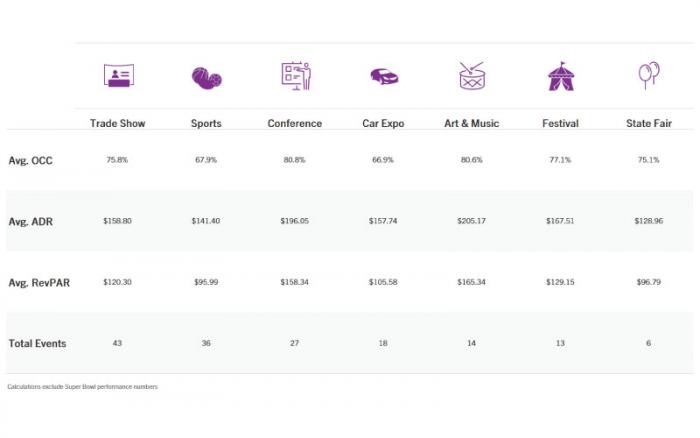We feel the need to open this blog with the obvious—the world is a different place than it was only a few months ago, and even when limitations around COVID-19 are lifted, the global events circuit will be quite different.
With that said, it remains true that understanding the dynamics of demand drivers in a market is a key component of the revenue-management process. To that end, we gather a listing of major annual events and run high-level analysis of the host markets and submarkets to demonstrate how corresponding hotel performance is affected. For our latest Events Database report, we narrowed that listing to events that reported an approximate attendance of 28,000 or more during 2019.
Considering that some of these events are most likely to draw a crowd of out-of-towners, it is no surprise that events in the “Conference” and “Art & Music” categories reported the highest average occupancy at the market level—80.8% and 80.6%, respectively. Art & Music events generated slightly stronger RevPAR of $165.34 compared with Conference events at $158.34.
Even though the aforementioned categories had the highest actual occupancy levels, the “Sports” category brought the strongest boost in terms of occupancy growth rates, with an 11.2% year-over-year increase. This can partially be the result of the timing of events, as most events that fall in the Art & Music category tend to be scheduled the same weekend each year, whereas Sports events can be slightly more flexible, not only in terms of timing, but also in potentially changing locations each year.
Major annual events and hotel performance

While repeating or changing location can influence the impact from events, factors such as religious holidays, school breaks, local celebrations, etc. can also have a strong effect on attendance levels. Thus, keeping track of past and future occurrences of major events can help explain performance and help with adjusting revenue-management strategies accordingly.
Keeping a pulse on event dynamics is more important than ever as we see the scale at which event cancellations due to COVID-19 have impacted hotel performance across the globe. While the event landscape may look much different in the future, being able to see the full picture and understand trends across event categories, event locations and schedules can be a powerful tool when outlining new revenue-management strategies.
For a more in-depth analysis of event impact, we offer customizable Special Event Analysis, Compression Studies, and more. Please contact us with inquires.